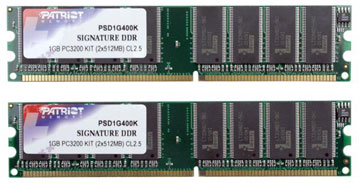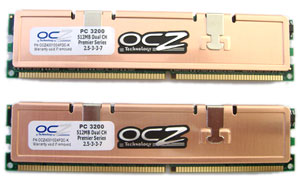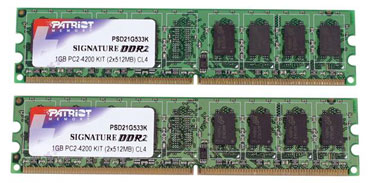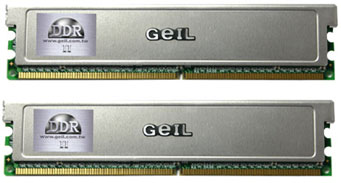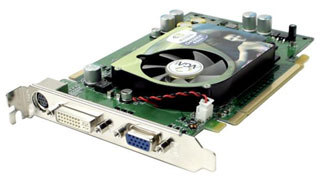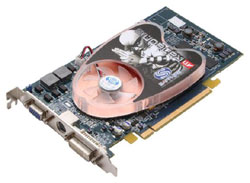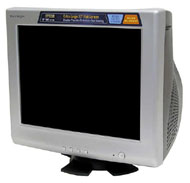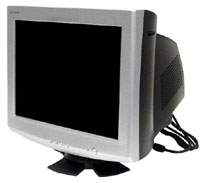
Original Link: https://www.anandtech.com/show/1820
Entry Level Buyer's Guide, October 2005
by Jarred Walton on October 14, 2005 12:05 AM EST- Posted in
- Guides
Introduction
The school year is now in full swing, and hopefully everyone is enjoying themselves. Some of you might already be in the depths of mid-terms, for which you have our condolences. If you're lucky, you already have a PC that you can use for doing homework, but parents might now find themselves looking towards the purchase of a new or second computer, in order to allow more than one person to access the Internet at the same time. What better way to fill that need than to pick up an economically priced budget PC?
Our last Buyer's Guide looked at the Mid-Range price segment, with a price range of $1250 to $1500. We split the recommendations up into office/business vs. gaming use, and we attempted to utilize the available budget to customize the system as much as possible for the intended market. We'd like to do the same thing for the budget sector, but unfortunately, there isn't a whole lot that can be done past a certain point. We'll give it a shot, though, with the goal of getting as close as possible to $500 for the non-gaming systems and $750 for the gaming configuration. If you want a bit more performance, you can look at the Mid-Range recommendations and try to downgrade some areas. Alternatively, you can take the budget recommendations and upgrade them where necessary. Either way, it should be pretty easy to combine the information from our Buyer's Guides and Price Guides to put together the type of system that you desire.
We'll be including an AMD as well as an Intel configuration for each of the recommendations. Performance and price are competitive in the budget realm, with AMD holding an overall lead at present. However, the lead is more like watching two family sedans drive down a two-lane street, the drivers going about their daily tasks without even realizing that they could be racing each other to the next stop light. If that doesn't make sense, what we're really saying is that for typical family use and basic office tasks, talking about performance really doesn't matter much. If the computer can get the job done and the user doesn't feel that it's too slow, the goal has been achieved. Price is generally a bigger concern than loading a web page one second faster.
Since the last Entry Level Guide, we've had a few changes. Nothing earth-shattering, of course, but we do have the expected price drops as well as a few new components on the market. As usual, we'll start with the selection of an appropriate platform and go from there.
Office CPU and Motherboard Recommendations
We've wavered back and forth between choosing integrated graphics vs. discrete graphics for the budget systems. Outside of gaming, though, there isn't really a need for even a low-end graphics card. The woefully inadequate - at least for games - Intel Extreme Graphics 2 in the 865G chipset is still perfectly good for office work. Newer options like the 915G's GMA900 and the 945G's GMA950 are quite a bit faster than the 865G, but they're still slower than almost any add-in card. We also have IGP options from both NVIDIA and ATI now, rounding out the possibilities.
What about Windows Vista, right? If Vista ships and you find that your IGP can't meet the demands, the solution is simple: buy a graphics card at that point in time. The $50 budget cards of late 2006 will be far more powerful than the $50 cards that are currently available. The only thing that you need to do is to make sure that your motherboard has an add-in graphics port, preferably PCIe X16. Our recommendations will meet that requirement. We'll start with the AMD choices.
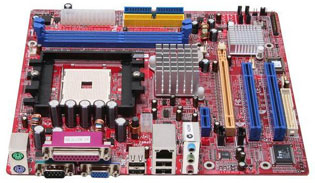 |
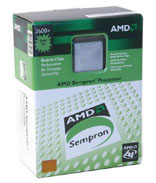 |
| Click images to enlarge. | |
AMD Office Motherboard: Biostar GeForce 6100-M7
Price: $66 shipped
AMD Office CPU: Sempron 64 (754) 2600+ - 128KB, 1.60 GHz Palermo
Price: $63 shipped (Retail)
Total: $129
We covered the launch of the NVIDIA 6100 chipset recently, and we've even done a follow-up with some BIOS updates for the ATI board. The end result is that performance is relatively close between the two contenders, so the purchase decision really depends on price. Biostar makes the only currently shipping 6100 board, while there are a few shipping Xpress 200 boards. However, only one socket 754 Xpress 200 board is available, and since we'd just as soon not spend an extra $50 on the processor, our choice is narrowed to the MSI RS480M-IL 754 or the Biostar GeForce 6100-M7. $91 vs. $65 makes the decision a no-brainer.
Athlon 64 for socket 754 represents a much faster solution, but it carries a higher cost as well. We took a look at all the shipping socket 754 processors that include 64-bit support - why get a regular Sempron when the 64-bit enabled versions typically cost less than a dollar more, right? The Sempron 2500+ starts at $63, as does the 2600+. Do you want 1.40 GHz with 256K of cache or 1.60 GHz with 128K of cache? Or do you spend the extra $11 to get both with the Sempron 2800+? Perhaps another $10 to drop back to 128K cache, but increase the CPU speed to 1.80 GHz, courtesy of the 3000+, would be best? Beyond the 3000+, prices jump $20 for the 3100+. OEM versions are $10 cheaper, but since a heat sink and fan will cost that much, there's little reason to pick up such a chip. (OEM chips from AMD are going to disappear soon, if that concerns you.) If your budget is really tight, though, the Sempron 2600+ packs the most bang for the buck.
We're going to downgrade performance as well as lower the price relative to the last Budget Guide, and save the slightly faster picks for the gaming configurations. Compared to our mid-range picks from last month, you're getting the CPU as well as the motherboard for less than the cost of just the CPU. Sure, it's a slower system overall, but it's still plenty fast for most computer needs. If you're doing something that requires more processing power, we're doubtful that you'd even consider a budget system.
If you really want a faster CPU, Athlon 64 chips are a good buy, but we'd suggest moving to socket 939 if you can manage to spend the extra money. Overclockers looking for bang-for-the-buck could try out the Turion chips, but at current prices, you would be far better off with socket 939 and Venice cores. Sempron Palermo parts like the 3000+ and 3100+ work pretty well at speeds up to 2.5 GHz, but the reduced cache of the 3100+ will just about equal a 2.2 GHz 512K Athlon 64. For overclocking on the cheap, you can save around $100 relative to a non-overclocked 939 system. (Did we just use "cheap" and "overclocking" in the same sentence? Yeah, it's probably asking for too much - move along, nothing to see here...)
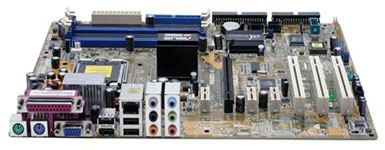 |
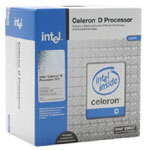 |
| Click images to enlarge. | |
Intel Office Motherboard: ASUS P5RD1-V
Price: $91 shipped
Intel Office CPU: Celeron D 331 - 256KB, 2.66 GHz Prescott
Price: $79 shipped (Retail)
Total: $170
Intel platform motherboards are almost always more expensive, and that's the case here. There is as yet no NVIDIA competitor for socket 775, so our IGP choices are limited to ATI's Xpress 200 or Intel's 915G and 945G. The 915G and Xpress 200 both lack support for Pentium D chips, but the likelihood of upgrading to such a processor during the life of the computer is small. 945G costs about $10 more than 915G - you'll want to avoid the GL and GV versions of the chipsets if you want dual-channel RAM support. Since 915G is at EOL (End of Life), we narrowed the final choice down to the 945G and Xpress 200, and opted to go with the latter for the improved IGP. If you really don't care about graphics performance at all, the 945G has slightly better overall performance. In either case, you can always add a faster discrete card in the future.
There are at present two Xpress 200 socket 775 boards on the market. One is from ECS and the other is from ASUS, and while the ECS board is $20 cheaper, it also comes with two DDR and two DDR2 slots. DDR2 is no more expensive than DDR these days, but since you can't use both in the ECS board, you end up with two usable DIMM slots. Even for a budget system, we would much rather have the potential to add more RAM, so we went for the ASUS with its four DDR slots. The word on the street is that, unlike the early AMD Xpress 200 boards, the ASUS board for socket 775 can actually overclock decently. Most budget shoppers probably won't care one way or the other, of course.
The CPU prices on Intel bottom out around $75, where AMD CPUs can go for as little as $60. We looked at all the Intel processors and found that the best choice was the Celeron D 331. The 331 is a newer version of the 330 chip with enabled EM64T support. Budget computing and 64-bit power seems a bit of a mismatch right now, but if you plan on keeping the computer for three or four years, 64-bit support might become important. Performance, as with the Sempron selection, should be adequate for most business and home user tasks. Even light gaming will work well, provided the IGP is sufficient - integrated graphics will be the bottleneck for just about any game anyway.
Gaming CPU and Motherboard Recommendations
The major change from the office configurations is going to be a move to discrete graphics, and in all instances, we're really interested in a motherboard that can overclock decently. You don't have to overclock, sure, but if you want higher performance from games and you can't afford a mid-range processor, a 25% or more overclock will certainly help. We've allocated an extra $250 for gaming purposes, and while the lion's share of that will go towards a good graphics card, an extra $40 or so on the motherboard and processor can also prove useful.
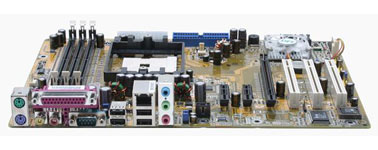 |
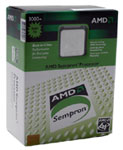 |
| Click images to enlarge. | |
AMD Gaming Motherboard: DFI Infinity nF4X
Price: $77 shipped
AMD Gaming CPU: Sempron 64 (754) 3000+ - 128KB, 1.80 GHz Palermo
Price: $75 shipped (Retail)
Total: $152
The king of socket 754 overclocking is still the DFI LanParty UT nF3 250Gb. Unfortunately, there's a problem with that board: it's AGP only. If you already have a good AGP card and have been holding off upgrading, it might be worth considering - for example, an upgrade from an Athlon XP or older P4 system might benefit. A hybrid AGP/PCIe board like the ASRock would probably be a better choice, though - if only you could find such a board for socket 754. MSI makes the Neo3-F that has PCIe and the AGP-like AGR slot, but performance and compatibility of the AGR slot is not as good as what we would like. If you have a high-end AGP card, it will be a definite bottleneck, and if you have a low-end AGP card (9800 Pro or slower) and care about gaming, it's probably time to upgrade anyway.
In the end, most people will be better served by a PCIe-only motherboard, and happily, DFI has recently released their Infinity nF4X for socket 754 with options that nearly match the LanParty UT nF3. There are a few other boards that might work as well, including the ASUS K8N4-E Deluxe, EPoX EP-8NPA7I, and the Abit NV8. Since the Infinity 4X is the cheapest of the bunch and manages to overclock well, it gets our pick. Incidentally, if you want integrated Firewire, you only get one choice: the ASUS K8N4-E Deluxe. You could also go out and buy a Firewire card for the same $20, but then you're filling up one of three PCI slots.
For the processor, we remain in the same position as on the office computer: upgrading to Athlon 64 costs enough that you'd be better off moving to socket 939. For overclocking, we don't want to go lower than a 9X multiplier, but the 10X chips like the Sempron 3300+ and 3400+ are too expensive to justify. We're left with the choice between the 3000+ and the 3100+, with the 3100+ generally running about 5% faster due to the added L2 cache. As you can already see from our above selection, we chose the 3000+.
The total for motherboard and CPU comes to $152. Your best bet for a substantial performance upgrade would be to go with the motherboard and CPU that we used in our recent Venice Overclocking Guide. The DFI Infinity nF4 with a socket 939 Athlon 64 3000+ (retail) will cost about $240. The extra $88 will definitely get you to the point where the GPU will be your performance bottleneck, but you can get about the same performance from the Sempron 3000+. An ATI X800 Pro was basically CPU limited at resolutions starting at 1024x768 in our testing, whether we used a Venice 3000+ or a Palermo 3100+. (We'll have an article covering this in more detail soon; for now, you'll have to accept that statement without concrete numbers.)
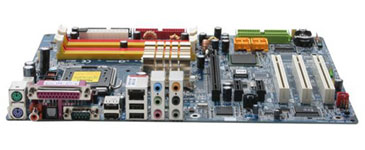 |
 |
| Click images to enlarge. | |
Intel Office Motherboard: Gigabyte GA-8I945P-G
Price: $113 shipped
Intel Gaming CPU: Celeron D 331 - 256KB, 2.66 GHz Prescott
Price: $79 shipped (Retail)
Total: $192
As with the AMD configuration, we want a board that has some potential for overclocking. Whether or not you choose to use that potential is up to you, but the default CPU speeds for budget processors are pretty limiting. Gigabyte has done a fairly good job of catering to the performance and overclocking enthusiast, so we've upgraded from the ASUS Xpress 200 motherboard to a Gigabyte 945P motherboard. The change gets us four DDR2 DIMM slots, a robust set of overclocking options in the BIOS, and support for dual core Pentium D processors. It's doubtful that the Pentium D will ever reach the point where you would use it to upgrade this budget system, but once Presler launches in early 2006, we could see prices drop to the point where it would only be a $160 purchase. Regardless, we're more comfortable with Intel chipsets when overclocking than ATI chipsets - at least for the currently shipping models.
The CPU choice remains with the Celeron D 331, for price/performance reasons. Should you be interested in upgrading the CPU for more performance, the next chip that we would even consider would have to bear the Pentium name. The Pentium 506 runs at the same speed as the Celeron D 331, but it has four times the L2 cache and will end up around 10 to 15% faster (sometimes more) in almost every benchmark. Unfortunately, what we really want is a Pentium that still has HyperThreading support enabled, and those chips start at $160 instead of $110. We would recommend either living with the moderate performance of the Celeron D 331, or saving your pennies until you can afford a mid-range CPU and motherboard.
Overclocking of Pentium and Celeron D chips that have a default 533 FSB is somewhat interesting. The 20X multiplier is so high that Northbridge, RAM, and FSB limitations rarely come into play. What's needed is a BIOS that allows the user to modify the RAM speed to at least DDR-400, if not DDR-266. Using DDR2-533 RAM in combination with the 533FSB setting results in a 1:2 ratio (CPU:RAM), your RAM will likely move beyond its limit when overclocking. Dropping to the DDR-400 setting gives a 2:3 ratio, and this will allow up to a 178 MHz CPU bus speed without going out of spec on the RAM. If your CPU can handle that, you should end up with a respectable 3.56 GHz clock speed, and as with the overclocked AMD system, you will be largely bottlenecked by the GPU at that point. Note that in either case, the RAM will continue to run at a faster speed than the FSB, so you shouldn't encounter problems with asynchronous memory speeds.
Memory Recommendations
We just took a look at several 1GB DIMM configurations. For the AMD socket 754 boards, it's important to remember that these are single channel memory controllers, so using two DIMMs won't help performance. Quite the opposite, in fact; some socket 754 motherboards will have problems operating two DIMMs at the fastest DDR400 speeds. We won't recommend using 2GB of RAM in a "budget" computer, but depending on price, it may be worthwhile to get 1x1GB instead of 2x512MB. It is important to note that the Intel configurations have differing RAM requirements. The office motherboard uses DDR memory, but we'll be using DDR2 for the gaming setup. Since we'll also get the benefit of dual-channel memory controllers on Intel, we chose 2x512MB packages for all the systems.
Office DDR Recommendation: Patriot Signature CL2.5 2x512MB
Price: $87 shipped (Retail)
We checked out prices on all the 1GB DIMMs in our RTPE and compared that with the prices of 2x512MB DIMMs. The difference in cost was only around $10, but generally speaking, the 512MB DIMMs had better timings for the same or lower price. (As we noted above, you would definitely want two DIMMs for the Intel Office system.) We've gone with the cheapest option, which ends up being the Patriot PC-3200 2x512MB Signature RAM. Rated at 2.5-4-4-8, the RAM isn't super fast, but the difference between this RAM and something a bit nicer like the Gaming RAM will in most instances be less than 5%. (You can likely run the RAM at 2.5-3-3-8 as well, though it's not guaranteed.) An extra $10 to $20 on every component adds up quickly, and we've tried to avoid going that route. For other alternatives, take a look at our "Gaming DDR RAM" recommendation below.
Gaming DDR Recommendation: OCZ Premier 2x512MB
Price: $95 shipped (Retail)
For the Gaming RAM, we wanted a bit more headroom for overclocking. Even though the lower memory ratios provide a lot of flexibility with Athlon 64/Sempron, it's still useful to be able to go above DDR400 speeds. We referenced our Value RAM Roundup as a guide - note that the OCZ Value VX/BH5 are no longer available without spending more money. For the best bang for the buck, the OCZ Premier at $95 is the most attractive upgrade. We managed to run this RAM at up to DDR480 with 2.5-3-3-8 timings (at 2.9V), so this should help out any overclocking attempts. CPU speed is generally king, but having a bit faster RAM is never a bad thing for performance.
Gaming DDR2 Recommendation: Patriot Signature PC-4200 2x512MB
Price: $74 shipped (Retail)
We've commented in a few other articles on the state of RAM prices, and DDR2 continues to drop. When you consider that you can get RAM capable of running up to DDR2-533 speeds for less than the cheapest DDR-400, the advantage of moving to DDR2 becomes clear. Yes, DDR2 generally has higher latency values than DDR, but there are a few architectural changes as well that make 4-4-4 DDR2 timings slightly faster than 4-4-4 DDR timings at the same clock speeds. The important thing is that getting DDR memory that can run at 533 MHz and above can cost almost twice as much as DDR2 RAM of the same speed. As with the Office DDR choice, we picked the most reasonably priced 2x512MB DDR2 offering that we could find, and once again, that was Patriot Signature. There are quite a few other manufacturers that make memory in this price range, but nearly all of them have the same specifications, and we might as well save $10. OCZ, Corsair, Mushkin, G.Skill, GEIL, and Crucial are all viable options, if you can't find Patriot RAM in your area.
Gaming DDR2 Alternative: GEIL PC-4200 2x512MB Value
Price: $86 shipped (Retail)
While technically no faster than the Office DDR2 RAM, we decided the extra $12 for the cool factor of the aluminum heat spreaders was a nice addition. (No, we don't mean "cool" as in temperatures - generally speaking, RAM heat spreaders don't actually help much.) G.Skill has some RAM with a yellow heat spreader if you're interested in more bling. Will the RAM run cooler or overclock better? Probably not, and the low CPU bus speed should make it a moot point. If you want the ability to push for even higher memory bandwidth, you could opt for some DDR2-667/PC2-5300 RAM instead. The cheapest qualifying RAM in that case also comes from GEIL, but costs $104. However, another $20 on a single component is hard to justify for this price segment.
Disclaimer: As we've said in the past, overclocking is not required. You may get an extra 20% or even 50% more CPU performance, but applications like games will often remain bottlenecked by the graphics card. For the hardcore enthusiast, overclocking can be a fun and cost-saving measure, but results are never guaranteed. If you need to ask how to overclock, you probably shouldn't do it (yet).
Graphics Recommendations
All of the motherboards are PCI Express, so we don't need to worry about AGP cards anymore. The Office builds also include integrated graphics, further eliminating the need for graphics cards. You may need to add a DX9 capable GPU in the future to get the most out of Windows Vista, but by the time you're ready to install Vista, even a $100 graphics card will likely be trounced by the $50 cards of the future. For the Gaming configurations - depending on how much gaming you plan on doing - we recommend that you spend as much money as possible on a graphics card. We've allocated an extra $250 for the gaming builds in order to accommodate higher performance requirements, but we'll still offer two options for the graphics card: a lower cost card and an upgraded card. (The final system configurations will use the lower cost option.)
Gaming Video Recommendation: eVGA GeForce 6600GT 128MB
Price: $138 shipped (Retail)
We considered quite a few options for the base graphics choice. X700 Pro is the cheapest and still offers reasonable performance for the $100 price tag. We'd like a bit more performance, though, so we expanded the search to the 6600 GT, 6800, and X800 lines. X1300 and X1600 might become viable in the future, but they are not yet available for purchase. The X800 lineup starts at $130 for the Sapphire X800 GT and then quickly jumps to $160 or more. There's also a $30 rebate to get the X800 for $120, which might be worthwhile if you can wait for the rebate to come through. We looked at X800 GT Performance, and found it to be competitive with the 6600 GT. However, the 6600 GT is still available for less, particularly when you consider that the cheapest X800 GT is a 128MB DDR-700 offering (as opposed to the 256MB DDR-980 cards). GeForce 6800 cards are all $170 or more even with a rebate, so we passed them by and ended up with the venerable 6600 GT.
Offering acceptable performance at resolutions up to 1280x1024 when antialiasing is turned off, the 6600 GT is a good match for the budget gamer. It's getting a bit "slow" relative to the fastest cards on the market, but it still manages to put up a fight with the upcoming X1600 XT. Given the price of $130 vs. the $249 MSRP for a yet-to-be-shipped X1600 XT, there's little reason to consider the latter. XFX, Chaintech, and eVGA are all priced similarly when you count rebates, but we took the eVGA for $138 and bypassed the need for a rebate. XFX allows you to spend $10 more now and get a net savings of $10 once the rebate clears, if you're interested in that sort of thing.
Gaming Video Alternative: Connect3D Radeon X800GTO 256MB
Price: $186 shipped (Retail)
For a bit more money, there are quite a few upgrade options. The X800 GT isn't really worth the added cost, but the GTO and GTO2 models pack in quite a few extras - extra pipelines, that is. The choice boils down to going with a GTO 256MB card or spending the extra $40 for the GTO2. GTO2 cards have 12 pixel pipelines but can usually be "unlocked" to 16 pipelines and X850 XT speeds. (To gain the extra performance from the GTO2, you have to flash the card with the X850 XT BIOS, but it always works - at least so far. The final clock speed varies, but most people have been getting good results. You can read more about the BIOS flashing process at TechPowerUp.) However, prices and availability are becoming difficult to gauge, so we'll opt for the standard GTO.
The GTO cards run at 400/980 speeds by default, but there's a decent chance of overclocking the core a bit. You'll want to get a card that has the 6-pin PCIe power connector for best results, which is why we've listed the Connect3D card instead of the Sapphire model. (Apparently, there's a very good chance that you can flash this card to an X850 XT BIOS as well.) What you end up with is close to X800/X850 Pro performance and $50 left over in your pocket. We won't list this component in the final list, but if you care enough about gaming to read the whole article, we think that this is the best price/performance option out there right now.
We really like the GTO2 for overclockers and others willing to flash the BIOS, but it might be gone by the time you read this, so we'll leave it as an honorable mention. (Some resellers have increased prices on the GTO2 cards by $50 to $90 in just the past week! It's still a bit cheaper than the real X850 XT, but you're only saving about $30 instead of $100+.) Sapphire apparently has one more shipment of GTO2 cores coming in, but it's going to be the last.
Miscellaneous Part Recommendations
We've covered the major components for a computer, and we'll finish by covering the storage, keyboard, mouse, sound, networking, case, and power supply choices. (That's a lot of choices left, but the impact on performance for most of them is negligible at best.) If you grab the cheapest parts for several of these options - input devices and speakers - then you can get the bare minimum of functionality. Depending on how much you plan on using the computer, though, we'd upgrade some options.
First, the keyboard and mice are how you actually communicate with the computer (unless you're planning on trying out some voice recognition software). If you're going to be using the computer for work, sitting at it eight hours a day, then do your body a favor and get a keyboard and mouse that are comfortable for long-term use. Ergonomic keyboards might help a bit if you have carpal tunnel problems or suffer from RSI (Repetitive Stress Injury). Of course, the truth is that the best way to combat such problems lies elsewhere: a good desk and chair combined with frequent breaks is critical for long-term comfort. The desk and chair can easily cost more than an entire computer; thankfully, upgrades are rare occurrences. We've given you a bit of advice on what you might want to consider, but the rest is up to you. As usual, we're going to recommend a standard keyboard/mouse combo from either Logitech or Microsoft.
Sound and networking devices are really easy to cover: use the integrated devices on the motherboard. Every modern motherboard includes both sound and network functionality. Is it the best sound that you'll ever hear from a PC? Hardly, but you probably won't care much. Networking performance is even less critical; unless you're planning on running gigabit Ethernet wiring, nearly all 10/100 network devices are close enough in performance that discussing it further amounts to splitting hairs.
For the speakers, at least for non-gaming use, just grab a $10 to $20 set (or use what you already have). If you need a truly cheap recommendation, you can get a pair of Logitech S-100 speakers for free with the purchase of a keyboard, courtesy of Newegg. It's tough to beat free (though we're really only saving $7). The sound quality just about matches the price, so if you want something where you could actually listen to a CD or even watch a DVD on your computer, you'll want to bite the bullet and at least get some speakers with a subwoofer. Small satellites simply can't produce bass well, and cheap satellites are even worse. Logitech's X-230 speakers run $37 shipped and provide a good minimum level of sound quality. We'll use those for the home/office setup, but for gaming, we'll upgrade to 5.1 speakers.
Office Components:
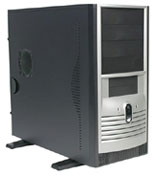 |
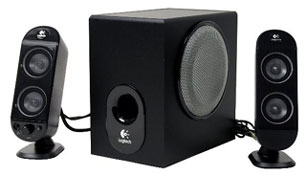 |
| Click images to enlarge. | |
| Hard Drive: | Hitachi 3.0Gbps 80GB 7200RPM 8MB Deskstar 7K80 | $57 |
| Optical Drive: | NEC 3540A Black (OEM) | $41 |
| Case and Power Supply: | Foxconn 3GTH-002 plus 300W PSU | $70 |
| Speakers: | Logitech X-230 2.1 Speakers | $37 |
| Keyboard and Mouse: | Logitech Internet Pro Desktop | $23 |
Gaming Components:
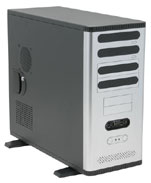 |
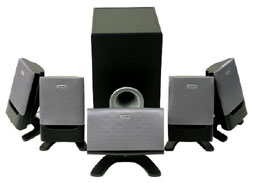 |
| Click images to enlarge. | |
| Hard Drive: | Hitachi 3.0Gbps 160GB 7200RPM 8MB Deskstar T7K250 | $81 |
| Optical Drive: | BenQ DW1640 Black (OEM) | $46 |
| Case and Power Supply: | Foxconn TPS544-S350 plus 350W PSU | $82 |
| Speakers: | Labtec ARENA 685 5.1 Speakers | $47 |
| Keyboard and Mouse: | Logitech Internet Pro Desktop | $23 |
Most of the choices should be pretty self-explanatory, so we just want to touch on the important areas. First, our hard drive and optical drive selections are essentially a toss up. Our last Hard Drive Roundup showed that SATA 3.0Gbps drives were faster in some areas, and NCQ could help out in certain tests as well, but there was no clear victor. This is a budget guide, so price as well as $/GB are going to be the primary factors in what we select. Hitachi won out in both the 80GB and 160GB categories - we chose a larger drive for the gaming system, though in truth, you could put either drive in either configuration, depending on how you plan to use the PC. The less than 40 cents per GB cost of some Maxtor 250GB models also bears mention, but we aren't big fans of the MaxLine II models and wanted to keep the HDD cost under $100, so we didn't upgrade to a 200GB or larger drive. The 160GB choice will still provide plenty of room for games, videos, music, photos, and whatever else you might want. Combined with the ability to archive old data to DVDR discs, storage capacity shouldn't be a major concern.
The 5-year Seagate warranty (you can get a similar warranty on the more expensive Western Digital drives) is also something to consider, but warranties don't cover lost data. (You might want to wait for the new Seagate drives as well, if you're looking to get a Seagate anyway.) That's why a good backup strategy is important, and the DVDR drives provide that. Firmware updates to the NEC 3540A, BenQ DW1640, and Pioneer 110D drives have ironed out most of the media compatibility issues, so they pretty much tie for price, performance, and compatibility. NEC wins on total cost plus shipping right now, but prices can fluctuate daily, so feel free to choose one of the other models.
The case and power supply choices are certain to draw plenty of comments, as they did with the last budget guide. We actually picked up the MGE CAG-M1-BK with the 400W PSU that we listed to run it through some tests. The quick summary is that the case is flimsy and cheap, the front panel connectors feature individual connections for the USB and Firewire ports rather than a nice molded block, and as a whole, the case is underwhelming. For $65 shipped, though, it gets the job done. It's been running almost 24/7 for a couple of months without any problems, even when overclocking a Sempron to 2.60 GHz. Will the power supply fail at some point? Probably. With the overclocked Sempron and an X800 Pro, though, peak power draw is only hitting 190W or so. For a budget system, you really don't need to go out and buy a $75 PSU in order to run stable. Something else to consider is that since shipping costs about $15 for many cases when ordered online, you might just run down to your local computer shops to see what's available.
The Foxconn cases and power supplies that we chose for this month's gaming selections are of higher quality than the MGE, but they're still not high-end. The "office" selection is a bit cheaper and only includes a 300W PSU (which should be fine for the integrated graphics and other components). For the gaming case, the PSU has a 24-pin power connector (really, this time!), and it's also ATX2.0 compliant. Both have a relatively conservative look, and we like the more expensive model a bit more. It has spring-loaded optical drive doors on the top two 5.25" bays. The cases also include a 120mm fan mounted at the back and a CPU duct, which should easily handle our budget builds.
You may eventually need to upgrade the case a bit with a new PSU or a second fan, but with Intel's talk of performance per Watt, the next generation PCs may actually reduce power requirements. (Here's hoping...) We don't expect people to have problems with either of these cases, but if you start thinking about adding multiple hard drives, you might need a heftier PSU.
Display Recommendations
The final component left to choose is the display. This is very difficult to do for a budget guide, without compromising on quality. We'd love to throw in an LCD, but without resorting to three-year-old models on clearance - a lot like what you get with many $500 OEM systems - the cost is a bit high. The cheapest decent LCDs (i.e. 17" 1280x1024 panels) start at over $210, so we're going to stick with CRTs. As with cases, you can probably get a better idea of what you're buying if you go to a local store. Larger stores like Best Buy and CompUSA will often have sales as well, and shipping costs on 35+ pound monitors often negate any price advantage of shopping online.
One other piece of advice if you want to get an LCD: you'll really want a model with a DVI connection. The digital signal prevents noise from creeping into the image, and we definitely feel it's worth the added cost. This brings up a second point: none of the current motherboards with IGP (that I'm aware of) have a DVI port. Even if you don't care about graphics performance, you'll have to purchase an add-in video card to get DVI-out.
Before we get to the actual recommendations, we want to offer this advice: your display is what you look at when you use the computer, and if it's a lower quality display, you will notice. You might also keep the display for many years, going through several PC upgrades. More than any other component, we would advise people to splurge on a really nice display. If you gave most people the choice between a really fast $800 system with a cheap CRT vs. a budget system with a nice 19" or even 20" widescreen LCD, the vast majority would prefer a quality display over the faster PC. If that doesn't apply to you, that's fine, but most of us have moved to LCDs now, and old 17" CRTs (as well as the early 40 ms LCDs) are almost painful to use.
Office Display Recommendation: Envision EFT720 17" CRT
Price: $127 shipped
The options for decent 17" CRTs are very limited. There are better models, but they are increasingly difficult to find online, and prices are often higher than 19" CRTs. Envision is a generic brand, and the display uses an invar shadow mask tube as opposed to the preferred aperture grille. Still, it has decent quality output and can run at up to 1280x1024 at 60 Hz, though we'd recommend 1152x864 at 75 Hz instead. (Unlike LCDs, a 60 Hz refresh rate on a CRT is clearly visible and most people find the flicker effect to be irritating.)
For about $20 more, you could "upgrade" to the NEC FE772 model, but you really don't get anything extra. They have the same resolution and features, and while the NEC display might be a bit better, we'd go for a larger display instead. The older NEC FE771-SB was a better monitor, and it used an aperture grille tube. It no longer shows up on most online pricing engines and has been discontinued. The replacement FE772 is a shadow mask like the Envision, and we find the displays to be a little less flat and a little less bright. As we've already stated, the quality of CRTs is on the decline, and "upgrades" like this only further illustrate the point. The majority of CRTs now being manufactured are cutting every corner possible to keep the costs down, and in reality, most 17" CRTs probably cost more to manufacture than even the 19" LCDs. Demand is the only thing keeping LCD prices up, and conversely, it keeps CRT prices low.
Gaming Display Recommendation: Envision EFT920 19" CRT
Price: $169 shipped
Déjà vu - didn't we already see this monitor? Just as the pickings are slim for 17" CRTs, they are equally poor on 19" models. We ended up with Envision again, based on price and quality. There are no aperture grille displays to be found online (in the 19" market), so the only thing that you can get out of the more expensive models is support for higher resolutions. Anything beyond 1600x1200 on an 18" viewable display is going to be difficult to notice.
Slightly better models are available for about $70 more, such as the Samsung 997DF. Contrary to the manufacturer specs, that actually will run 2048x1536 at 60Hz - at least the one that I own works at that resolution. 1600x1200 at 75 Hz is far preferable, though, outside of running high resolution benchmarks - at least in my opinion. Incidentally, I picked up my Samsung 997DF over a year ago for $200 at Best Buy, which is $40 less than the current online price plus shipping. They might still have some on clearance, if you're lucky.
System Summaries
That takes care of all the recommendations, though if you skimmed the majority of the article, you may have missed our suggestions to upgrade a few of the areas. Specifically, we really recommend getting the best display that you can afford, most likely a 19" LCD. That would increase the price by $100 to $150, but it would really be a worthwhile investment. Your eyes will thank you in the long run. With the base recommendations, though, let's see if we managed to stay within our budget this time. (You might not realize this, but I actually pick the parts that I want to include and only then tally the cost. As long as I'm within about $100, I usually stick with it - if I overshoot the budget, it's because I really don't feel that it's a good idea to cut corners any further just to shave $50 from the total.)
Office Systems
| AMD Entry Level System | ||
| Hardware | Component | Price |
| Processor | Sempron 64 (754) 2600+ - 128KB 1.60 GHz Palermo | 63 |
| Motherboard | Biostar GeForce 6100-M7 | 66 |
| Memory | Patriot Signature CL2.5 2x512MB | 87 |
| Video Card | Integrated GeForce 6100 | 0 |
| Hard Drive | Hitachi 3.0Gbps 80GB 7200RPM 8MB Deskstar 7K80 | 57 |
| Optical Drive | NEC 3540A Black (OEM) | 41 |
| Case and Power Supply | Foxconn 3GTH-002 plus 300W PSU | 70 |
| Display | Envision EFT720 17" CRT | 127 |
| Speakers | Logitech X-230 2.1 Speakers | 37 |
| Keyboard and Mouse | Logitech Internet Pro Desktop | 23 |
| Bottom Line | 571 | |
| Intel Entry Level System | ||
| Hardware | Component | Price |
| Processor | Celeron D 331 - 256KB 2.66 GHz Prescott | 79 |
| Motherboard | ASUS P5RD1-V | 91 |
| Memory | Patriot Signature CL2.5 2x512MB | 87 |
| Video Card | Integrated GMA-950 | 0 |
| Hard Drive | Hitachi 3.0Gbps 80GB 7200RPM 8MB Deskstar 7K80 | 57 |
| Optical Drive | NEC 3540A Black (OEM) | 41 |
| Case and Power Supply | Foxconn 3GTH-002 plus 300W PSU | 70 |
| Display | Envision EFT720 17" CRT | 127 |
| Speakers | Logitech X-230 2.1 Speakers | 37 |
| Keyboard and Mouse | Logitech Internet Pro Desktop | 23 |
| Bottom Line | 612 | |
The office configurations both come in at around $600, with the Intel system costing $40 more. If the $500 price point is really important, dropping to 512MB of RAM and getting rid of the speakers will get you close. Performance should be quite good for most home/office applications - not that surfing the internet and reading email really requires a ton of computing power. Remember that the cost doesn't include an Operating System or any other software (other than what might come with the DVDR and motherboard). Unless you plan on running Linux and OpenOffice, you'll need to spend another $90 for Windows XP Home and $70 to $200 (or more) for MS Works or MS Office. Corel Office is another option that can be had for under $50.
So, what about a bargain OEM system from Dell or the likes? You can get a 15" LCD and the OS included in that cost, but virtually every other component and feature has been cut. You'll likely drop to a 40GB hard drive, lose the DVDR, drop to 2x256MB (or even 2x128MB!) of RAM, and you won't even get an X16 PCIe expansion slot in all likelihood. That may or may not matter to you initially, but it could become important over the next year and beyond. Built-in obsolescence is never a good thing, so if you want the ease of assembly that comes with an OEM computer, we would look to spend closer to $750 or even $1000 in order to avoid specific problems.
Gaming Systems
| AMD Entry Level Gaming System | ||
| Hardware | Component | Price |
| Processor | Sempron 64 (754) 3000+ - 128KB 1.80 GHz Palermo | 75 |
| Motherboard | DFI Infinity nF4X | 77 |
| Memory | OCZ Premier 2x512MB | 95 |
| Video Card | eVGA GeForce 6600GT 128MB | 138 |
| Hard Drive | Hitachi 3.0Gbps 160GB 7200RPM 8MB Deskstar T7K250 | 81 |
| Optical Drive | BenQ DW1640 Black (OEM) | 46 |
| Case and Power Supply | Foxconn TPS544-S350 plus 350W PSU | 82 |
| Display | Envision EFT920 19" CRT | 169 |
| Speakers | Labtec ARENA 685 5.1 Speakers | 47 |
| Keyboard and Mouse | Logitech Internet Pro Desktop | 23 |
| Bottom Line | 833 | |
| Intel Entry Level Gaming System | ||
| Hardware | Component | Price |
| Processor | Celeron D 331 - 256KB 2.66 GHz Prescott | 79 |
| Motherboard | Gigabyte GA-8I945P-G | 113 |
| Memory | Patriot Signature PC-4200 2x512MB | 74 |
| Video Card | eVGA GeForce 6600GT 128MB | 138 |
| Hard Drive | Hitachi 3.0Gbps 160GB 7200RPM 8MB Deskstar T7K250 | 81 |
| Optical Drive | BenQ DW1640 Black (OEM) | 46 |
| Case and Power Supply | Foxconn TPS544-S350 plus 350W PSU | 82 |
| Display | Envision EFT920 19" CRT | 169 |
| Speakers | Labtec ARENA 685 5.1 Speakers | 47 |
| Keyboard and Mouse | Logitech Internet Pro Desktop | 23 |
| Bottom Line | 852 | |
Our gaming configurations exceed the target $750 price by a bit more, though there are additional opportunities for cutting costs. Getting the less expensive options on the RAM, HDD, DVDR, display, and speakers will cut the price of each system by $90 without really affecting performance or features much (other than the noticeable change in display size). As with the office system, you'll still need at the very minimum an OS, and for gaming, you are pretty much required to use Windows XP. That will add another $90 for the Home edition, or $135 for XP Pro. In case you missed it, a good alternative to the 6600 GT was listed earlier in the X800 GTO, but we didn't include it in the above list in order to come a bit closer to the $750 target.
OEM systems are really a poor choice for most gamers. The critical component is the graphics card, and market segmentation by the OEMs usually prevents you from getting the best price/performance in that area. Many OEMs will only offer the X300 or a similar card as a "gaming upgrade" - and they'll even charge as much as the 6600 GT that we've selected for the inferior "upgrade". If you go with a higher end OEM system, they may offer additional GPU options, but the rest of the system will also be upgraded to the point where a moderate gaming system from an OEM will cost closer to $1500. You could buy a $700 system and add your own graphics card, but if you have to start upgrading one piece of hardware, why not just go for the whole hog and build the system yourself? You'll also get the option to overclock if you DIY the system, which really helps performance of budget gaming.
Conclusion
That wraps up another Budget Buyer's Guide. Most of us would really prefer to spend a bit more money for additional quality and performance here at AnandTech, but not everyone needs a super fast computer. College students, parents, grandparents, and those looking for a secondary (or tertiary or even quaternary) system for the home will generally be happy with any of the above systems. Small businesses could also easily make use of a bunch of these systems, though there's a question of support and assembly costs if you start buying more than a couple and don't have a dedicated IT staff.
The biggest compromise that we made was undoubtedly the display choice, but it's hard to justify doubling the cost of the display for many people. If at all possible - particularly for a business setting - we'd drop the CRT and get a decent LCD instead. A budget PC with a mid-range LCD is our preferred combination for business computers.
As always, feel free to voice your opinion or ask questions in our comments section. Incidentally, if you email me specific questions and I think that they are relevant to what others may ask, don't be surprised to find me posting the response to the comments section and sending you a link. (Don't worry - no email addresses or names will be posted.) For every person that takes the time to send a comment, there are probably fifty others with a similar thought that will appreciate the additional information.

